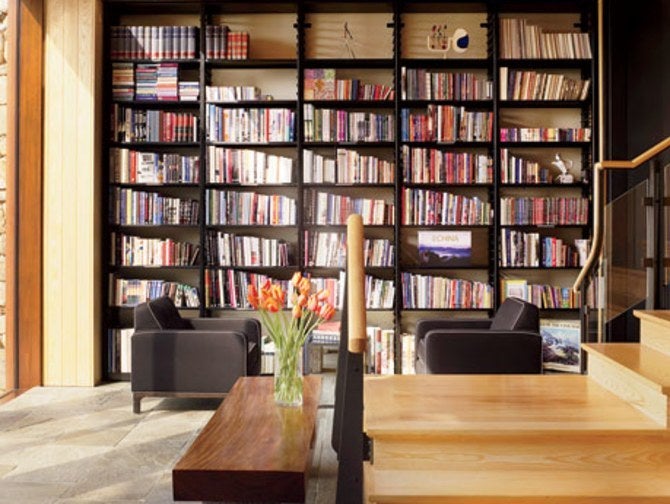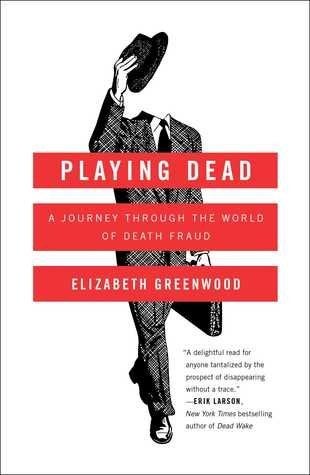For Architectural Digest, by Tisha Leung.

In the lower-level library, custom-made metal shelves hold Abbeville titles; the armchairs are covered in a black wool felt by Donghia.
It was the Roman scholar Marcus Tullius Cicero who said, “If you have a garden and a library, you have everything you need.” Here at AD, we tend to agree. When it comes to design luxuries, a personal library is a major draw for its grand visual display, ability to convey a sense of relaxation, and generosity of literature within arm’s reach. “It says a lot about the inhabitant,” says architect Joel Barkley of New York–based firm Ike Kligerman Barkley. “If I look at your titles and spines, I know a lot about who you are.” Adds partner Thomas A. Kligerman, “I like long horizontal planes of wood or metal in a contemporary house. Vertical structures look unified with continuous crown and base molding.” We asked Barkley and Kligerman for tips on how to design a dream library and learned that a range of materials — steel, zinc-wrapped shelves, or rich walnut — serve to either recede into the background or play a larger design role, while collections of books charm whether set in a traditional or modern setting. Here’s what else they had to say about things to keep in mind when creating your own personal book sanctuary.
Consider the context. The materials you choose should reflect the space’s overall aesthetic. Inside a timber-framed barn (above) with glass walls, oiled-steel shelving units give the publisher client a bold setting to display many of his own imprints. “They were designed to take full advantage of the loft ceiling and ended up being incredibly heavy,” says Barkley. “We detailed the edges with eased corners to protect the bindings.” In another project, the architect dressed a Soho loft with rows of zinc-wrapped horizontal surfaces that cantilevered off a painted brick wall. Kligerman looks to rich woods like fumed white oak or Claro walnut for a more historic feel. “In the past, I’ve been inspired by the architecture of Carl Linnaeus’ Swedish house,” he says, “and ran horizontal rustic boards to resemble a classic cornice.”
“The materials you choose should reflect the space’s overall aesthetic.”
Pick a style. To incorporate a library into a streamlined interior, it is often more about the tomes themselves which are featured “front and center,” says Barkley. “They become a dynamic, colorful plane of books.” In a traditional house, vintage-looking publications are vital supporting actors in the overall design scheme surrounded by architectural elements or positioned to punctuate a fireplace or window.
Decide between built-ins versus furniture. Integrating and displaying a personal literary collection can be considered an art. “To me, modern domestic architecture is horizontal, where vertical supports are eliminated,” says Kligerman. “They should sit on long, uninterrupted planes of wood or metal.” While the go-to for many architects are clean lines, a piece of furniture can bring a unique personality to the space. “By using a vintage hutch, a space becomes more layered with items that exude character or a past life of its own,” says Barkley. Not to mention, with books housed in a mobile unit, any corner or niche can become an instant library.
Stay organized. To keep the structure balanced and visually tidy, Barkley often designs the shelves to adjust so heavier books can group on the bottom, while lighter ones go on top. When it comes to organizing an expansive modern library, Kligerman offered a tip the firm employs in their own offices: “In a whole room dedicated to architecture, periodicals are laid out like a giant map of the U.S.A. Books on Maine are catalogued on the upper right-hand corner, Florida resides on the lower right-hand, and California takes up all the bookshelves at the far left.”
More from Architectural Digest:

